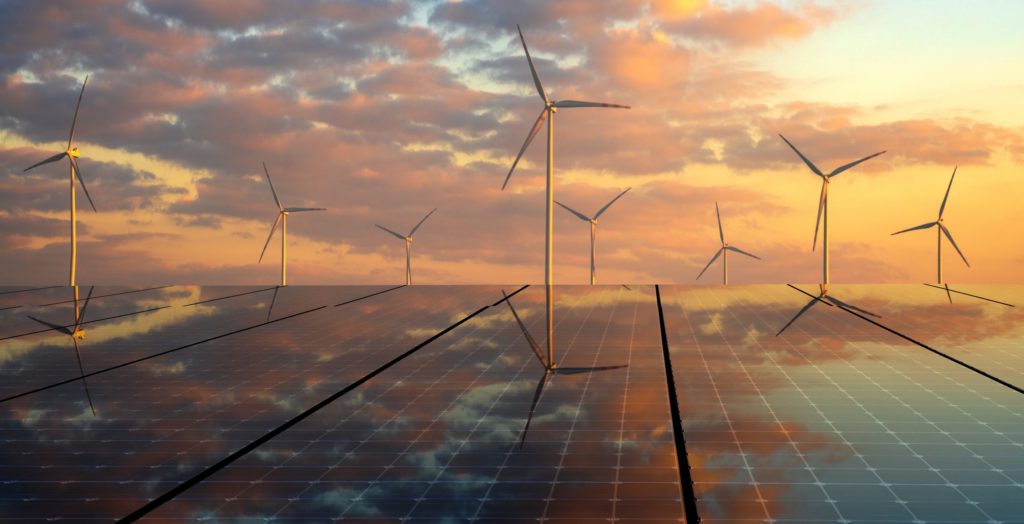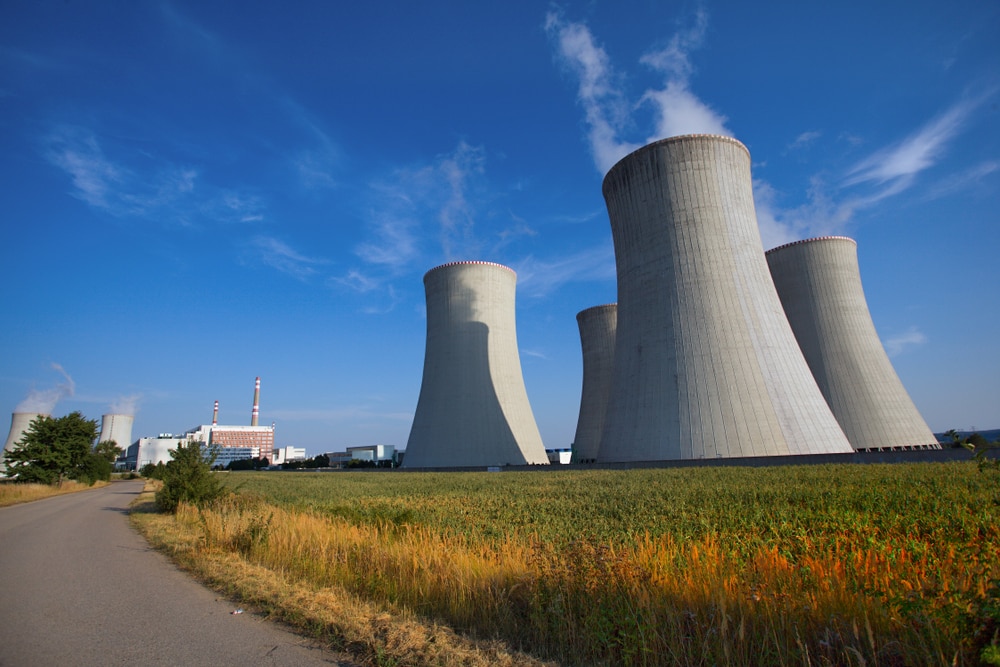5 Myths About Climate Policy
Too often, politicos try to give the impression that they have the magic beans for sale that will finally resolve climate change. But we should not take claims of policy efficacy at face value when it is influenced by institutional bias. Real progress on climate change requires an honest brokerage of the issues, and a willingness to work on the nuts and bolts of pragmatic progress that can yield more benefits than costs. To understand what makes good climate policy, here is the truth about five of the myths you may have heard.
Myth No. 1 Bipartisan climate policy isn’t possible.
The common refrain is that addressing climate change requires big government action, and small government conservatives are obstinate in the pursuit of such policy. The truth is far more nuanced, as some of the biggest moves on climate policy in recent years have come from bipartisan, frequently Republican-led bills. The Nuclear Energy Innovation and Modernization Act, which makes it easier for new and improved reactor designs to get licensed, was teed up by Sen. John Barrasso (R-Wyo.), co-sponsored by Democrat climate hawk Sen. Sheldon Whitehouse (D-R.I.), and became law in January 2019. The Department of Energy Research and Innovation Act, which expedites technology transfers from national labs, was introduced by former Rep. Lamar Smith (R-Texas) and became law in September of 2018. And new bipartisan bills are in the works, such as the BEST Act, the USE IT Act, and the LEADING Act, and they all aim to capture emission abatement opportunities that are not currently in the suite of federal policies. Further, were it not for COVID, it would be around this time that the final tranche of minority leader Kevin McCarthy’s climate package would be released. To top it off, the latest government funding effort included a multitude of bipartisan climate provisions, including reductions of extreme warming potential greenhouse gases (hydrofluorocarbons), streamlined hydropower permitting, and expanded energy R&D for climate efforts.
Bipartisanship rarely grabs headlines as the droll of day-to-day legislating is never as exciting as the latest Washington scandal, but it does happen, and it has been the driver of most of the climate benefits achieved by the federal government.
Myth No. 2 Massive climate bills and regulations are the best way to solve climate change.
When Trump won the 2016 election, climate themed headlines were downright pessimistic, even going so far as to say “planet earth lost.” But the truth is that the executive branch of government is not the end all be all for climate progress. An objective look at the data reveals something that may be surprising to some: even before the pandemic emissions came in below expectations under Trump, the rate of carbon intensity improvement in the economy was better during Trump’s term than Obama’s prior term, and the emission targets of Obama’s signature regulation, the Clean Power Plan, were met more than a decade ahead of schedule despite Trump jettisoning the rule. How could a president doing the opposite of conventional climate policy perform better than expected on climate?
The answer is that President Obama’s “pen and phone” approach to climate policy was just not that successful. Regulations are narrow in scope and constrained by legal limits on the executive’s authority. Compared to the dynamism of the economy, which is rapidly replacing coal with cheaper natural gas (the biggest source of emissions reductions since 2005 at 3.3 billion metric tons, more than all renewable energy combined), command and control policies accomplish very little.
Myth No. 3 Transitioning to renewables is easy.
It is true that renewables are usually cheaper than fossil fuels, but this is not the same as them being substitutable for fossil fuels. A typical photovoltaic solar panel only provides power for about a quarter of the time, and a wind turbine about a third of the time. Energy storage is expensive, and so is running cars, trucks, and buses on batteries. The reason we still use fossil fuels is because solar does not provide power at night, and a jerry can of gasoline is a lot cheaper than an EV battery despite having enough energy to move a ton of steel roughly the same distance.
Most of the studies that compare the cost of energy resources ignore dispatchability issues, creating an apples-to-oranges comparison that is misleading. The Energy Information Administration, the most trusted nonpartisan source of energy analysis, explicitly cautions against comparing energy prices between non-dispatchable (renewable) resources and dispatchable (fossil and nuclear) ones.
Myth No. 4 The only reason we use an energy source is because it is subsidized.
Virtually every source of energy is subsidized in some manner, usually because of holdover policies from a time of energy scarcity, but there is frequent mischaracterization of the nature of how energy in the United States is subsidized and to what extent. The International Monetary Fund estimates that fossil fuels in the United States are subsidized by $649 billion annually, leading many to believe that fossil fuels are favored as heavily as the defense budget—but this is just not true. The IMF’s figure assumes that because the United States does not tax carbon dioxide as it would prefer, then it is an implicit subsidy on fossil fuels. By this same logic, you are subsidizing your local bank by not robbing it.
Setting aside debates of optimal tax policy, actual budgetary energy subsidies, as in government transfers to entities to reduce market prices, were about $15 billion in FY2016. Of that, $1.3 billion were for coal, and -$773 million (yes, negative, as tax breaks for expensing were being repaid) were for oil and gas, leaving a net of $489 million in fossil fuel subsidies or less than a tenth of a percent of the IMF’s estimate. Renewables claim the largest share of subsidies (45 percent), and end-use (i.e., assistance to low-income households) makes up the next largest portion (42 percent). Per unit of energy, renewables are subsidized approximately 25 times as much as fossil fuels.
But the broader truth is that energy subsidies are miniscule compared to total energy expenditures. In 2018, Americans spent $1.3 trillion on energy. Compared to the total value of the energy market, energy subsidies are akin to trying to steer a container ship with a paddle oar, as private investors consider many factors—not just subsidies—in how best to capture market share and maximize profit.
Myth No. 5 Climate policies are costless.
There is no shortage of politicians and advocacy groups touting “green jobs” or other stimulative effects of climate policy, often giving the impression that using government funds to subsidize clean energy or other climate efforts is costless. Unfortunately, this is not true for the same reason that a hurricane is not a “job creator” when FEMA and swarms of construction workers come in to relieve and rebuild. That reason is “opportunity costs,” which are the competing opportune uses of funds (other efforts at economic relief, or even better just letting people hold onto their cash). If that hurricane had not rolled in, people would have spent less money on reconstruction and more on the things that yield better returns on investment or improve their quality of life.
It is okay for climate policy to have a cost. After all, hurricanes have a cost that we recognize and pay for, but we do this because there is more value in rebuilding and utilizing the land than just leaving devastation as is. Climate change is similar, and some policies may be worth the cost of bearing, but it is dishonest for politicians or advocates to claim that expensive policies like the Green New Deal could be handwaved away as “creating millions of jobs.” If we wanted to create jobs, we would give construction workers spoons instead of shovels, but it is foolish to claim that anyone would be better off because of it.









